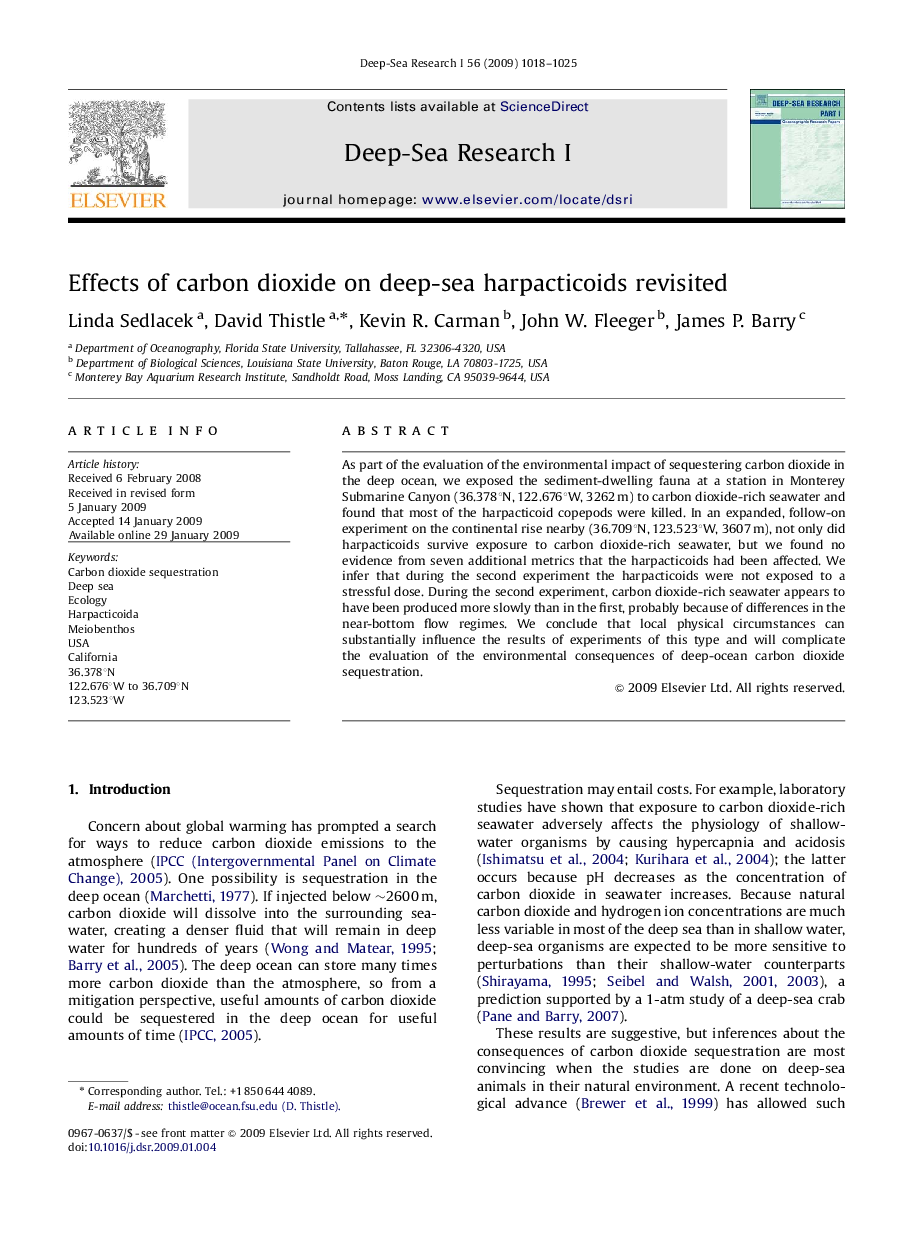| Article ID | Journal | Published Year | Pages | File Type |
|---|---|---|---|---|
| 4535255 | Deep Sea Research Part I: Oceanographic Research Papers | 2009 | 8 Pages |
As part of the evaluation of the environmental impact of sequestering carbon dioxide in the deep ocean, we exposed the sediment-dwelling fauna at a station in Monterey Submarine Canyon (36.378°N, 122.676°W, 3262 m) to carbon dioxide-rich seawater and found that most of the harpacticoid copepods were killed. In an expanded, follow-on experiment on the continental rise nearby (36.709°N, 123.523°W, 3607 m), not only did harpacticoids survive exposure to carbon dioxide-rich seawater, but we found no evidence from seven additional metrics that the harpacticoids had been affected. We infer that during the second experiment the harpacticoids were not exposed to a stressful dose. During the second experiment, carbon dioxide-rich seawater appears to have been produced more slowly than in the first, probably because of differences in the near-bottom flow regimes. We conclude that local physical circumstances can substantially influence the results of experiments of this type and will complicate the evaluation of the environmental consequences of deep-ocean carbon dioxide sequestration.
